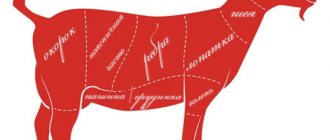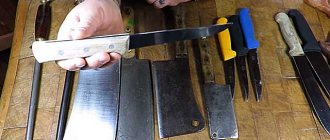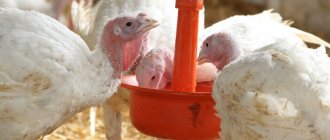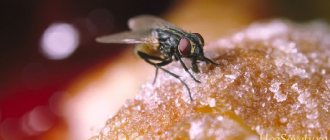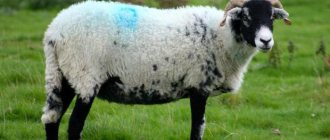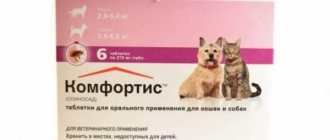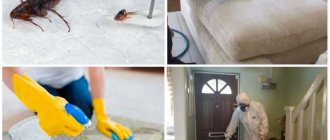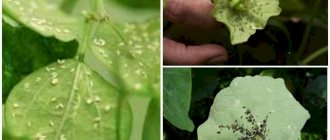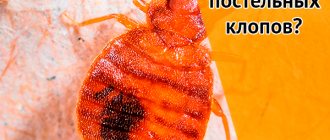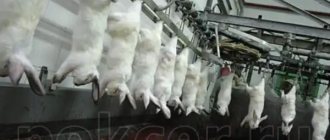When breeding fur-bearing animals for the purpose of obtaining meat and animal skins, the farmer needs to know when and how to slaughter nutria. It is important not only to correctly determine the readiness of animals for slaughter, but also to learn how to remove the skin from a carcass so that it does not lose its value.
Nutria breeding
How to set the deadline for slaughtering nutria?
Taking into account the degree of fur maturity, the timing of animal slaughter is adjusted. Nutria skin becomes of high quality when the animals reach 9-10 months of age. With the onset of cold weather, the fur becomes much softer and thicker. Therefore, climatic conditions also influence the timing of slaughter.
Taking into account the region of residence, the time of slaughter of animals is also adjusted:
- north of the European continent – early November to mid-March;
- center of Europe – mid-November to early March;
- south – last days of November (beginning of December) – first days of March.
If nutria wool meets all quality requirements, slaughter can be carried out in spring or summer.
Before carrying out the slaughter procedure, farmers must carefully select animals. It is important to correctly assess the condition of the animals’ hair. Even if the time for slaughter has come, you need to take only those nutria whose wool meets the following requirements:
- on the back there is a pile at least 12 cm long;
- the coat is thick and has an attractive shine;
- in the groin area the skin is covered with an even layer of wool, the length of the down is at least 10 cm;
- covering hairs visible on the lower abdomen;
- there are no tangles on the belly and ridge.
When all indicators correspond to the norm, the animal is completely ready for the upcoming slaughter procedure. In this case, the farmer will receive a skin of excellent quality, which will have a high cost.
If there is dirt or tangles on the fur, the animal must first be washed and combed well.
Animals weighing less than 3 kg cannot be sent for slaughter. For rapid growth and weight gain, many farmers use feed that is designed for piglets. This food contains a large amount of nutrients. And nutria, having reached 6 months of age, have the required weight, and can be slaughtered. About the rules for feeding nutria, read the article: “What and how to feed nutria?”
Proper slaughter
Nutria is valued for its high-quality fur and meat, which is not only tasty, but also healthy. Slaughtering nutria is not an easy task, so it is necessary to initially learn some important aspects and acquire visual skills.
To begin with, you should know how long animals should be kept on a fasting diet before slaughter, and this is from 12 to 16 hours. It is also recommended to select individuals in the morning.
Many breeders are interested in the question of how many slaughter methods exist that can be used at home. The most common two methods are:
- Manual;
- Using electricity.
It is recommended to slaughter a rodent at the age of 6-7 months. The fact is that the animal’s fur has already been formed and even though the nutria is still growing, the quality of the fur will remain the same, and a fatty layer will begin to form on top of the meat. Therefore, if the rodent is not slaughtered at this age, then keeping it will be inappropriate and unprofitable.
What inventory and equipment will be needed for slaughter?
Proper preparation will greatly simplify the slaughtering procedure. To work you will need certain equipment:
- several containers in which fat and blood will be collected;
- a table for cutting up a carcass - it must be covered with zinc sheet;
- Cooper scissors, plain;
- knives for bleeding, skinning, trimming fat;
- metal scraper;
- brush;
- metal and wooden hammer;
- metal comb;
- hanger with ring;
- a needle with which the skin will be knitted;
- a blank necessary for cleaning the skin from the remains of meat and fat.
Taking into account the chosen method of slaughtering nutria, the tools necessary to kill the animals are selected - electrodes or a stick. You will also need to prepare rubber gloves.
What are the methods for slaughtering nutria?
Nutria can be slaughtered using several methods - manually or with electric shock. Each method has both advantages and disadvantages. It doesn’t matter which method is chosen, slaughter must be carried out in a properly prepared room with sufficient lighting and working ventilation.
Manual
During the manual method, a stick that is not too thick is used, which should be heavy. One part is wrapped with fabric or rubber. This will prevent the fur and skin from being damaged during the impact.
Algorithm of actions for manual slaughter:
- lift the nutria with one hand to simultaneously hold the tail and hind legs;
- Place your front paws on a hard surface;
- make a clear blow to the back of the head or forehead - this will kill the animal;
- calculate the force with which you will strike, since the animal should die immediately, but try not to injure the skull and skin;
- hang the nutria head down, securing it by the hind legs;
- use a knife to cut the vessels located in the mouth;
- place a container under the carcass to collect blood;
- 3-4 minutes later, after the blood has completely drained, remove the animal from the hook and turn it over;
- remove urine by pressing in the groin area;
- Now remove the skin before the animal’s body begins to stiffen.
Manual slaughter of an animal requires certain skill and experience. For the first time, you can ask for help from a more experienced person who can give full instructions on how to perform this procedure.
Using electric current
This is a simpler and more humane method of slaughtering animals, since death occurs instantly (no more than 4 seconds). But not every farmer has the opportunity to implement it, because to work you will need to acquire special equipment. Most often, this method is used in situations where a large individual is slaughtered.
Algorithm for the procedure:
- attach electrodes to all paws;
- pass a current discharge through the carcass (220V);
- after a couple of seconds, hang the animal, securing it by its hind legs, to remove all the blood.
Working with electricity is very dangerous, so strict adherence to safety measures is required - you only need to work with thick rubber gloves.
Current Usage
It is one of the simpler and more humane methods, because the animal is killed using an electric discharge. As a rule, this method is used to slaughter large livestock that require a lot of physical effort.
Clogging occurs using electrodes through which alternating current flows. One wire is attached to one of the front and one of the hind legs, then 220 V electricity is connected, the current should not be less than 0.7 amperes. The slaughter process itself lasts no more than 3 seconds.
No matter which method is chosen, it is best to do not the most pleasant work in the morning, because the subsequent cutting of the carcass will not take as little time as it might seem.
Rules and methods of skinning
Removing the skin from an animal must be carried out in a certain sequence, taking into account the following rules:
- remove the skin from the lower paws first and end with the head;
- first of all, the gonads of males are removed - place the animal on a table previously covered with a layer of sawdust, and make a circle-shaped incision in the area of the anus;
- hang the carcass by the two hind legs and cut the skin;
- First make cuts next to the hind legs in the area where the border with the edge passes, and then draw a line along the inside of the thigh;
- cut the tail from the inside of the body;
- cut the skin on the front legs in the same way as when working with the hind legs;
- remove the skin with your fingers, remove the layer of connective tissue;
- Take your time and do not make pulling or sudden movements, as this may ruin the skin.
To prevent the wool from becoming stained with grease and blood, sprinkle it with sawdust.
Slaughtering equipment
In addition, you will need special equipment and supplies. To ensure that nutria slaughter and skin processing are carried out correctly, the following should be taken into account (Figure 1):
- It is necessary to prepare and always keep clean equipment for processing carcasses and skin: blanks, straighteners, various knives and scrapers, scissors, brushes and brushes;
- In the slaughterhouse there should be a separate table, upholstered with galvanized sheet, for cutting the carcass and removing the skin;
- The room should be well lit;
- It is necessary to prepare containers for drainage of blood, fat and muscle tissue and consider a method for their disposal;
- To carry out slaughter, the room should be provided with cold and hot water.
Figure 1. Equipment for slaughtering nutria: 1 - knives for removing and degreasing skins, 2 - knife with removable blades for removing skins, 3 - clamp, 4 - regular scissors and Cooper scissors, 5 - metal hand scraper, 6 - spoon for degreasing flesh, 7 - wooden and metal hammers, 8 - brush, 9 - brushes, 10 - metal combs, 11 - ring and hanger, 12 - needle for knitting skins
The slaughter and processing of skins is carried out in special clothing: a robe, a rubberized apron and oversleeves.
How to clean and store nutria skin?
After the skin is removed, you need to immediately begin dressing it. Start cleaning the inside of any remaining meat and fat:
- wrap the skin inside with fur on a previously prepared wooden block, securing it against the wall - it should remain motionless during operation;
- carefully remove any remaining meat and fat;
- To clean the skin from the inside, use surgical blades and scissors, which will minimize the risk of cutting the fur;
- then place the skin on a wooden straightener, which you purchased in advance for drying and giving the skin the correct shape;
- In summer, install the straightener under a canopy, but the temperature should not be higher than +30 degrees Celsius, otherwise a debate will begin, which will cause damage to the skin.
This procedure must be carried out by a farmer with sufficient experience, otherwise there is a risk of spoiling a valuable product and devaluing the skin.
After the skin is removed and processed, it is sent for storage. If it will not be used immediately, preserve it in a salt solution:
- Sprinkle the skin generously with salt;
- place in a container with a slight slope, along which the resulting ichor will begin to flow;
- After 1-2 days, check if the skin is poorly preserved, repeat the procedure.
Then roll the skin so that the fur is inside, wrap it in a layer of plastic film. You can store the prepared skin in the freezer or refrigerator for 6 months.
Carcass cutting
When the skin is removed, you can begin the procedure for cutting the nutria, adhering to the following procedure:
- remove the paws with an ax;
- make an incision in the peritoneum area and remove the entrails;
- work very carefully so as not to accidentally rupture the bladder, otherwise its contents will spill onto the meat and it will acquire an unpleasant aroma;
- intestines with bladder and lungs - throw away;
- rinse all remaining organs well with warm water;
- rinse the carcass well;
- wipe the meat and carry out the same procedure for the giblets;
- Place the prepared organs inside the carcass if you plan to sell the carcass.
The procedure for slaughtering and further cutting up nutria requires some experience. If you have absolutely no idea how to do everything correctly, it is better to entrust the work to a more experienced person, since there is a high probability of spoiling the skin and fur, which will lose its value.
You can also see how to properly cut nutria in the following video:
After studying the theory, it is worth practicing a little; it would be ideal to have the support of an experienced slaughterer. It is enough to just perform the procedure a few times under the guidance of a specialist, and you will gain the necessary experience and confidence. In the future, butchering of animals can be easily done independently.
0
0
Copy link
